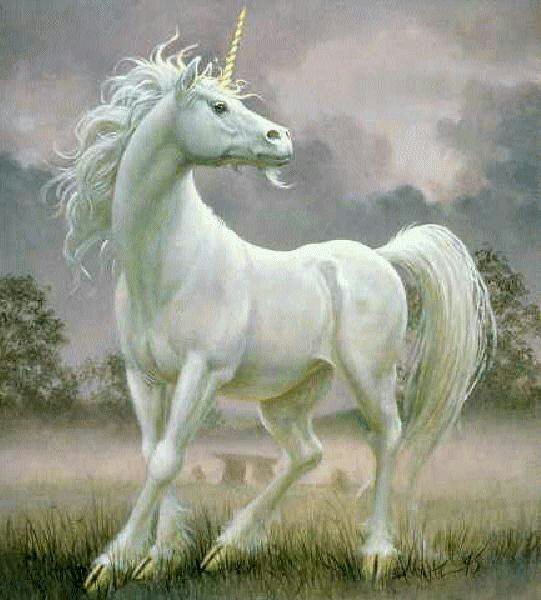Of all folk creatures, the unicorn perhaps has some of the most interesting history behind it. Although you probably already know, a unicorn is essentially a horse that has a single, spiraling horn located at the center of its forehead. Depending on what culture you are looking at, a unicorn can have numerous qualities; from healing effects to a horn that can nullify poison when stirred in a drink. In China there is a creature similar to a unicorn called a kirin, and its presence can predict either the birth of a royal baby, or an impending death!

However, the unicorn was not always described as simply being a horse with a spiraling horn. An early description of the unicorn was written by Pliny the Elder in his encyclopedia Natural History; the only problem being that Pliny literally wrote down everything he heard about with little to no attention paid to the veracity behind the story. The description he wrote is this, “The unicorn is the fiercest animal, and it is said that it is impossible to capture one alive. It has the body of a horse, the head of a stag, the feet of an elephant, the tail of a boar, and a single black horn three feet long in the middle of its forehead. Its cry is a deep bellow.” Now, the myth may have arisen from sightings of antelopes and similar animals, but the more likely culprit is this guy:

The Indian rhinoceros. In fact, during this time period the unicorn was sometimes known as the Indian ass. Admittedly,the rhino bears little resemblance to the modern interpretation of the unicorn, the unicorn strayed further and further from the original interpretation as time wore on. Perhaps the next large landmark in the history of the unicorn was in medieval Europe. During this time, the Vikings actually sold so-called unicorn horns to European countries such as England. A single horn would go for the equivalent of tens of thousands of dollars, and Queen Elizabeth I actually received a carved and jewel-encrusted horn that was worth the price of a castle (about 4-5 million pounds today).
There was just one teeny problem with the unicorn horn market…unicorns don’t exist. Hate to break it to you. The Vikings were ripping off their European friends and selling them horns taken from a creature that doesn’t even live on land:

Yep, they passed off narwhal horn as that of a unicorn. Actually, it’s not even a horn but a tusk. The Vikings would either buy them a dime a dozen from the Inuit or harvest it themselves, and then turn a major profit off the Europeans. This is probably why the modern version of a unicorn has a spiral horn, it was inspired by the tusk of a narwhal. Kind of genius when you think about it, and it indicates that the Vikings were smarter than a lot of people give them credit for today.
“The Vikings Sold Narwhal Tusks as Unicorn Horns.” The Vintage News, The Vintage News, 20 Mar. 2017, www.thevintagenews.com/2017/03/21/the-vikings-sold-narwhal-tusks-as-unicorn-horns/.
Simon, Matt. “Fantastically Wrong: The Weird, Kinda Perverted History of the Unicorn.” Wired, Conde Nast, 19 July 2018, www.wired.com/2015/02/fantastically-wrong-unicorn/.
It amazes me how a description of a rhinoceros was able to turn into a unicorn. I didn’t know the myth of unicorns was as old as Pliny the Elder (or older). It’s also really interesting how Vikings were able to make a profit off of the myth. I wonder what other myths have been exploited in similar ways?
I like the fact you have included about the Chinese ‘Kirin’, I never would have known that, I would of thought China would have just had ‘regular’ unicorns. I also think the explanation of the Vikings selling fake unicorn horns is quite interesting as even coming from the UK I never knew this and I even studied the Vikings at school!
I like how in this blog you do a sort of “Myth Busters” thing because I think it’s really cool to explore the background and extrapolations that these myths and creatures create and it is a great combination of history and fantasy.